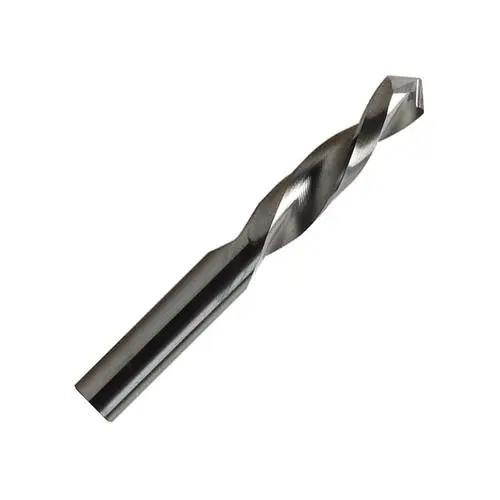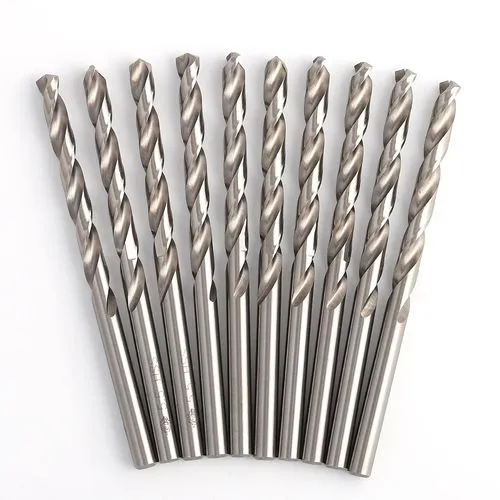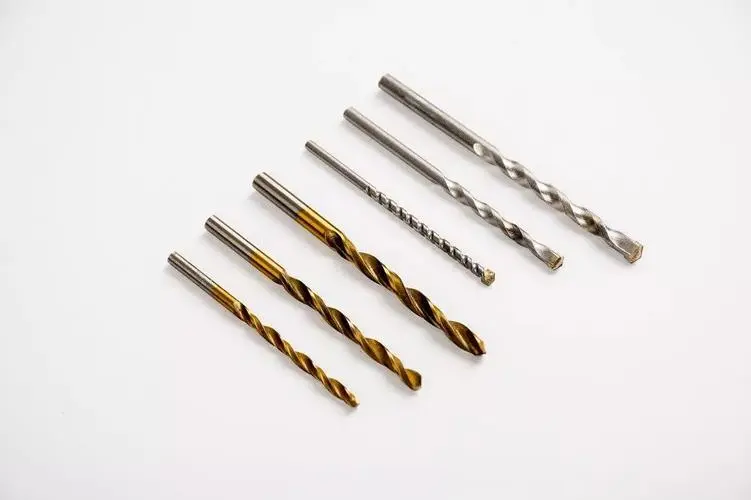Selection of Drill Bit Material
According to the processing characteristics of the material, the drill bits are required to have the following features:
1.The hardness of the drill bit must be greater than that of the workpiece being processed.
2.Since the drill bit undergoes significant torsional and axial forces during machining, it must have sufficient strength and toughness. Due to the good toughness of the processed material, sharp cutting edges are required to reduce work hardening. Therefore, the tool material must have sufficient wear resistance to minimize machining hardening.
3.Due to the high chemical properties of the workpiece, it is required that the tool material has poor affinity with titanium alloys to prevent diffusion bonding and tool sticking or drill breakage phenomena.
Currently, there is a wide variety of materials suitable for tool manufacturing, including tool steel, cemented carbide, and superhard materials.
Initially, attempts were made to use ordinary high-speed steel drill bits with coatings for experimentation. Ordinary high-speed steel drill bits are inexpensive, and with the use of coating technology, the friction coefficient between the tool and the workpiece can be significantly reduced, thus improving tool life. However, due to the high spindle speed of the machine tool and insufficient strength of the drill bits used, the drill bits broke during the machining process, yielding unsatisfactory results.
Cemented carbide is a newly developed tool material suitable for rough and finish machining of most materials, including steel, cast iron, special materials, and plastics. Therefore, it was decided to use solid cemented carbide drill bits.

Determination of Drill Bit Grinding Parameters
Main auxiliary planes of twist drill
The main auxiliary planes of a twist drill include the base plane, cutting plane, median plane, and cylindrical plane. If auxiliary motions are not considered, the base plane of any point on the main cutting edge of the twist drill varies due to the architectural characteristics of the twist drill.
The cutting plane at any point on the main cutting edge is a plane containing the cutting speed direction of that point and cutting the machined surface at that point. The cutting plane is perpendicular to the base plane, and the cutting planes at different points on the main cutting edge are different.
The cylindrical plane at any point on the main cutting edge is a cylindrical surface made through that point and with the drill axis as the center line, with different radii for different cylindrical planes.

Selection of main geometric parameters of twist drill
The selection of main geometric parameters of twist drill includes the choice of drill point angle, the choice of drill cutting edge front and back angles, analysis of the influence of drill spiral angle on drill life, and relevant treatments of the cutting edge. The drill point angle determines the width of the chip and the size of the drill cutting edge front angle.
When the drill diameter and feed rate are constant, increasing the point angle makes the chips narrower, reducing the load per unit cutting edge. The point angle has a significant influence on the front angle. Increasing the point angle is conducive to improving the cutting conditions at the drill center. The point angle affects the direction of chip flow. Based on relevant tool design data and considering the low hardness but high stickiness of the processed product, the drill point angle was chosen as 140°.
The front angle of the twist drill is determined by other geometric parameters of the drill bit. During high-speed cutting on the machine tool, the front angle has a minor effect on cutting deformation and cutting force. Using a smaller front angle can enhance the tip strength. After determining the front angle, the larger the back angle, the sharper the cutting edge, but it will correspondingly reduce the wedge angle, affecting the strength and heat dissipation area of the tool. Therefore, a slightly smaller back angle of 8° was selected for the drill bit.

Analysis of the influence of drill spiral angle on drill life
From the external characteristics of the twist drill, it can be known that the spiral angle at each point on the cutting edge is variable, directly affecting the front angle of the main cutting edge. The larger the spiral angle, the sharper the cutting edge, and the lighter the cutting, otherwise, it will cause severe work hardening, leading to rapid wear of the cutting edge. Based on relevant tool design data, a spiral angle of 30° was chosen to meet usage requirements and facilitate mass production.
Relevant treatment of the cutting edge
The treatment of the cutting edge includes measures such as transverse edge correction, chamfering, and counter-edge. Suitable blunting of the drill bit’s cutting edge was carried out according to the processed material, machine tool performance, machining parameters, and fixture conditions, improving the drilling performance of the drill bit and reducing tool wear.
Application of Coating Technology
With the cutting parameters unchanged, in order to improve production efficiency and reduce production costs, coating technology has become a trend for tool application, reducing tool wear to increase tool durability. Tool coating refers to the deposition of a thin layer of wear-resistant refractory metal or non-metallic compound on the surface of a cemented carbide or high-speed steel (HSS) matrix using a gas-phase deposition method. As a chemical and thermal barrier, the coating reduces diffusion and chemical reactions between the tool and the workpiece, thereby reducing tool wear. Coated tools have characteristics such as high surface hardness, good wear resistance, stable chemical properties, heat resistance, oxidation resistance, low friction coefficient, and low thermal conductivity. After coating, the number of drill bits processed has significantly increased, and the unit cost has been greatly reduced.








